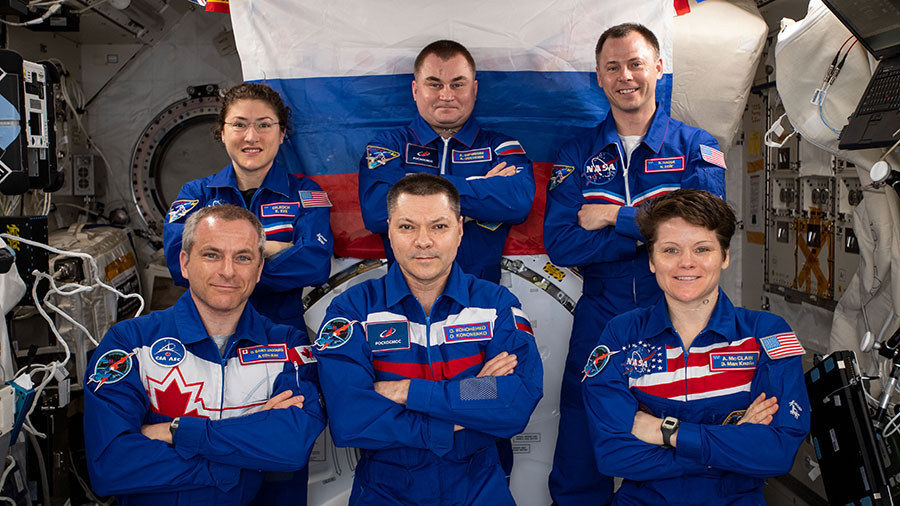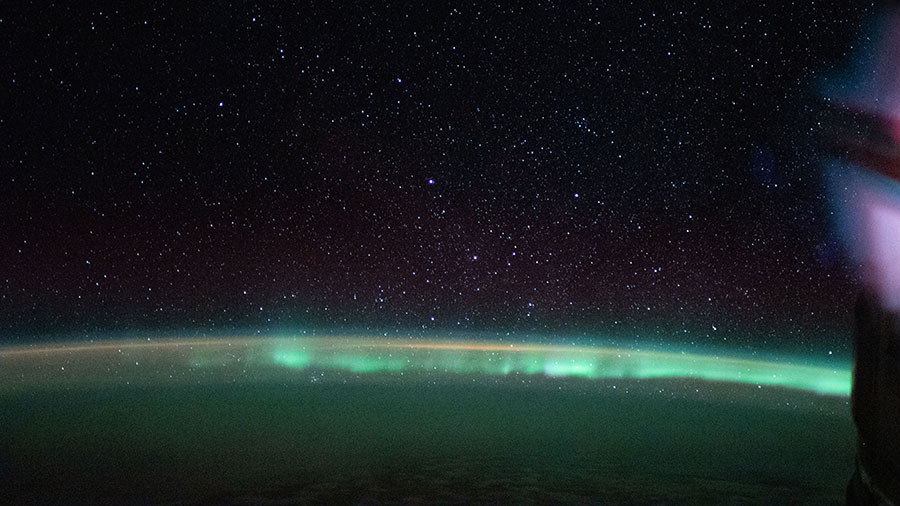
Robotics, combustion and human research were the primary focus of today’s science schedule aboard the International Space Station. The Expedition 59 crewmembers also checked out U.S. spacesuits and specialized pants designed to counteract some of the effects of living in microgravity.
Astrobee, a tiny cube-shaped free-flying robotic assistant, is being tested aboard the orbital lab for its sighting and motion abilities. Flight Engineer David Saint-Jacques of the Canadian Space Agency (CSA) set up Astrobee for more mobility tests today inside the Japanese Kibo laboratory module. The device may support routine maintenance tasks and lab monitoring capabilities. Northrop Grumman’s Cygnus space freighter delivered Astrobee to the station April 19.
The safe observation of how fuels and materials burn in microgravity takes place in the space station’s Combustion Integrated Rack (CIR). The research takes place in the U.S. Destiny laboratory module and may help engineers design more fuel-efficient spacecraft engines and safer, less flammable environments. NASA astronaut Christina Koch replaced a burner and igniter tip in the CIR to maintain continuing combustion research operations.
Flight Engineer Anne McClain of NASA attached cuffs to her legs and sensors to her chest for a series of blood pressure checks and ultrasound scans today. The Vascular Echo biomedical study from CSA, ongoing since March 2015, analyzes an astronaut’s cardiovascular system for conditions such as arterial stiffness.
U.S. spacesuits continue to be serviced after a set of three spacewalks that took place earlier this year. Astronaut Nick Hague cleaned the suit’s cooling loops, cycled their pressure valves and tested water samples inside the Quest airlock where U.S. spacewalks are staged.
Cosmonauts Oleg Kononenko and Alexey Ovchinin have been training this week to use the Lower Body Negative Pressure suit. The Russian suit, also known as Chibis, counteracts the upward fluid shifts in the human body caused by microgravity. This may alleviate the head and eye pressure reported by astronauts. An easily recognizable symptom of these fluid shifts that all crews experience is “puffy face.”









